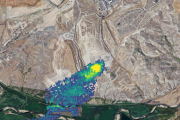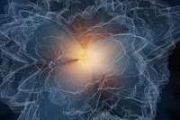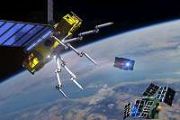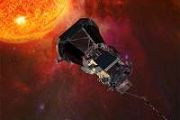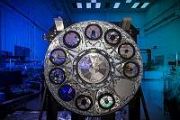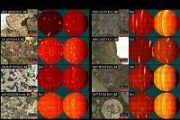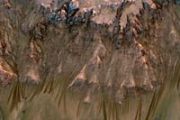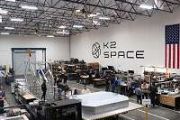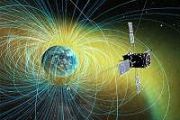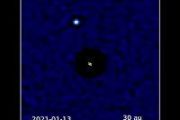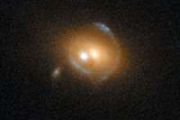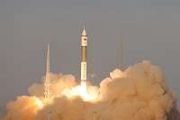
Copernical Team
ESA's Swarm dodges collision during climb to escape sun's wrath
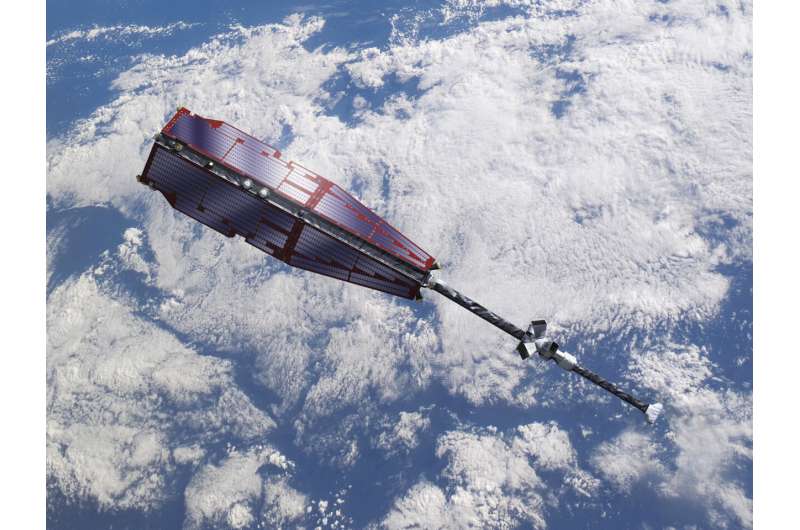
A swarm? Of bugs?
Not quite—Swarm is ESA's mission to unravel the mysteries of Earth's magnetic field. It's made up of three satellites, A, B and C—affectionately known as Alpha, Bravo and Charlie.
What happened?
A small piece of human-made rubbish circling our planet—known as space debris—was detected hurtling towards Alpha at 16:00 CEST, on 30 June. A potential collision was predicted just eight hours later, shortly after midnight. The risk of impact was high enough that Alpha needed to get out of the way—fast.
There's rubbish in space?
A lot of it. Old satellites, rocket parts and small pieces of debris left over from previous collisions and messy breakups. Each little piece can cause serious damage to a satellite, and larger ones can destroy a satellite and create large amount of new debris.
Was this the first time this has happened?
That day? Maybe. Ever? No way. Each one of the ESA's satellites has to perform on average two evasive maneuvers every year—and that's not including all the alerts they get that don't end up needing evasive action.
Scientist reviews the key technologies for space-based situational awareness
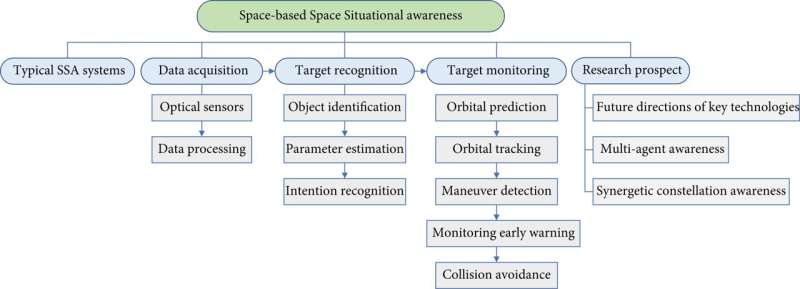
Since the launch of the first man-made earth satellite, the number of space objects has been rapidly increasing. According to the authoritative statistics from NASA, over 6,400 orbiting spacecraft still existed until early 2021. Furthermore, the total number of rocket debris above 10 cm has exceeded 16,000. The space environment has become highly congested due to the increasing space debris, seriously threatening the safety of orbiting spacecraft.
Space-based situational awareness, as a comprehensive capability of threat knowledge, analysis, and decision-making, is of significance to ensure space security and maintain normal order. Various space situational awareness systems have been designed and launched. Data acquisition, target recognition, and monitoring constituting key technologies make major contributions, and various advanced algorithms are explored as technical supports.
However, comprehensive reviews of these technologies and specific algorithms rarely emerge. This disadvantages the future development of space situational awareness. In a review paper recently published in Space: Science & Technology, Shuang Li from College of Astronautics, Nanjing University of Aeronautics and Astronautics, reviewed and analyzed research advancements in key technologies for space situational awareness, indicated the future directions of the key technologies, and emphasized the research prospects of multiagent and synergetic constellation technologies for future situational awareness, aiming to provide references for space-based situational awareness to realize space sustainability.
Galileo 2nd Generation takes 11 leaps forward
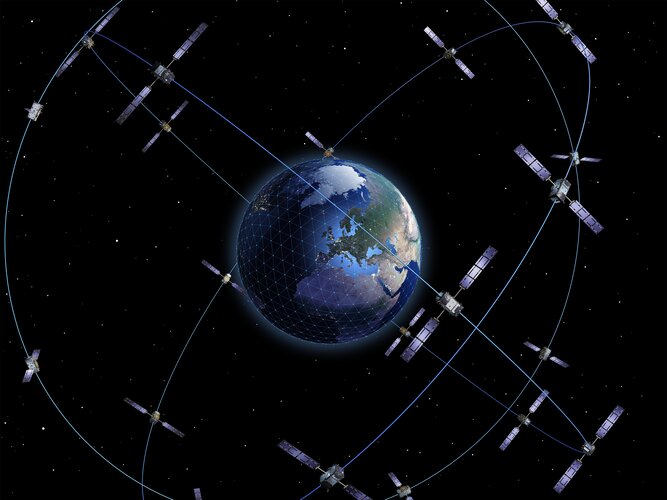
Europe’s Galileo constellation is already the world’s most precise satellite navigation system, but now Galileo Second Generation, G2, is coming. A set of 11 procurements – adding up to a maximum of up to approximately 950 million euros – are being released over the course of July by ESA, aiming for this next generation satnav system to begin operations and provide new capabilities later in this decade.
Swarm dodges collision during climb to escape Sun’s wrath
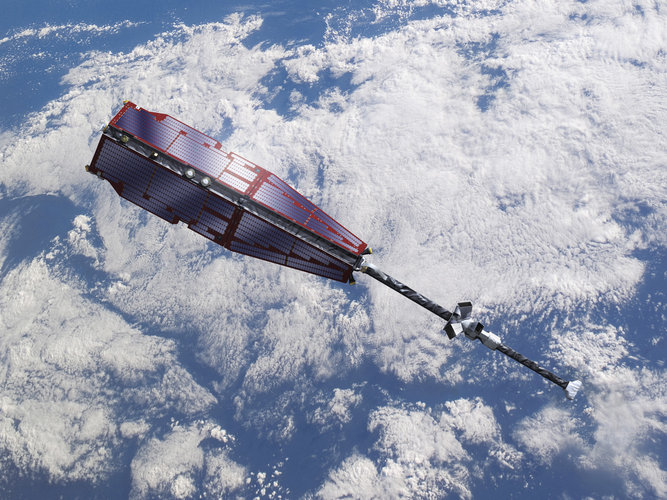
easyJet signs up for Iris space-enabled digital skies

Passengers on board commercial airline easyJet will speed to their destinations faster and greener, thanks to an ESA-backed initiative to digitalise the skies.
Scientists find oldest Martian meteorite's original home
 Scientists announced Tuesday they had found the crater from which the oldest known Martian meteorite was originally blasted towards Earth, a discovery that could provide clues into how our own planet was formed.
The meteorite NWA 7034, nicknamed Black Beauty, has fascinated geologists since it was discovered in the Sahara Desert in 2011.
It fits easily in the hand, weighing just over 300
Scientists announced Tuesday they had found the crater from which the oldest known Martian meteorite was originally blasted towards Earth, a discovery that could provide clues into how our own planet was formed.
The meteorite NWA 7034, nicknamed Black Beauty, has fascinated geologists since it was discovered in the Sahara Desert in 2011.
It fits easily in the hand, weighing just over 300 DataFarming bringing Pixxel's hyperspectral imaging to Australian farmers
 Toowoomba, Australia (SPX) Jul 10, 2022
Pixxel has announced an early adoption partnership with Australian cloud-based agritech company DataFarming. Using Pixxel's hyperspectral dataset, DataFarming will be able to monitor crop health at new speeds and greater resolutions compared to the multispectral imaging on behalf of tens of thousands of farmers.
Pixxel's constellation of hyperspectr
Toowoomba, Australia (SPX) Jul 10, 2022
Pixxel has announced an early adoption partnership with Australian cloud-based agritech company DataFarming. Using Pixxel's hyperspectral dataset, DataFarming will be able to monitor crop health at new speeds and greater resolutions compared to the multispectral imaging on behalf of tens of thousands of farmers.
Pixxel's constellation of hyperspectr Northrop Grumman completes PDR for a 300-kilowatt class high energy laser
 Northrop Grumman Corporation (NYSE: NOC) recently completed the preliminary design review for a high-energy laser prototype that will feature an architecture scalable to more than a megawatt for the U.S. Department of Defense. The review establishes the company's technical approach for precise, low-cost, speed-of-light technology for military operations.
"This is an important step in the a
Northrop Grumman Corporation (NYSE: NOC) recently completed the preliminary design review for a high-energy laser prototype that will feature an architecture scalable to more than a megawatt for the U.S. Department of Defense. The review establishes the company's technical approach for precise, low-cost, speed-of-light technology for military operations.
"This is an important step in the a Did you see it? Supermoon graces skies worldwide
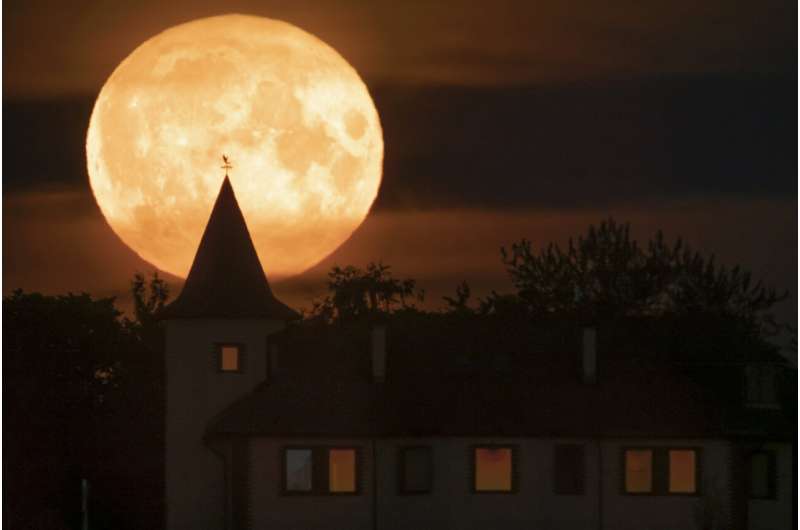
Did you catch the supermoon?
There was a full moon Wednesday night, and at the same time, the moon was closer to Earth than usual. That combo is called a supermoon.
The closer proximity to Earth can make the moon appear slightly bigger and brighter, weather permitting.
One name for Wednesday's full moon is the "Buck moon"—a reference to the time of year when new antlers are growing on male deer, or bucks.
The supermoon on June 14 was the "Strawberry moon" because it's the full moon at strawberry harvest time.
Webb delivers deepest image of Universe yet
 The NASA/ESA/CSA James Webb Space Telescope has delivered the deepest, sharpest infrared image of the distant Universe so far.
Webb's image is approximately the size of a grain of sand held at arm's length - and reveals thousands of galaxies in a tiny sliver of vast Universe. This sharp near-infrared view has brought out faint structures in extremely distant galaxies, for an unprecedented
The NASA/ESA/CSA James Webb Space Telescope has delivered the deepest, sharpest infrared image of the distant Universe so far.
Webb's image is approximately the size of a grain of sand held at arm's length - and reveals thousands of galaxies in a tiny sliver of vast Universe. This sharp near-infrared view has brought out faint structures in extremely distant galaxies, for an unprecedented 









